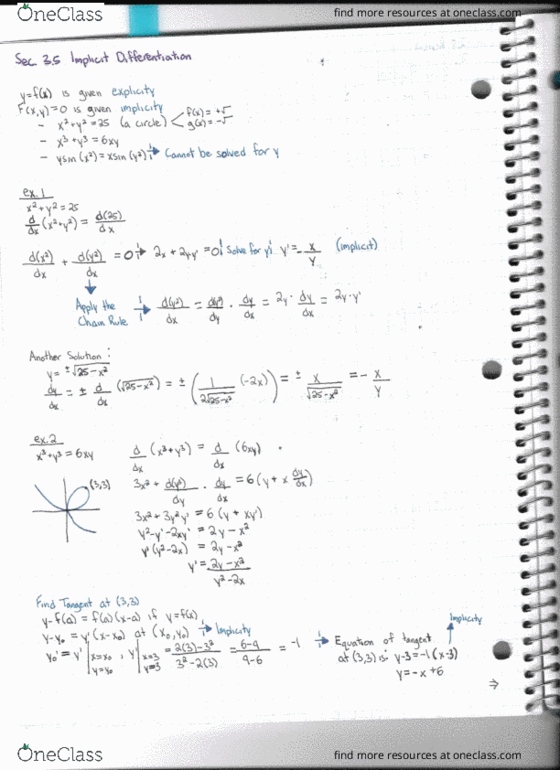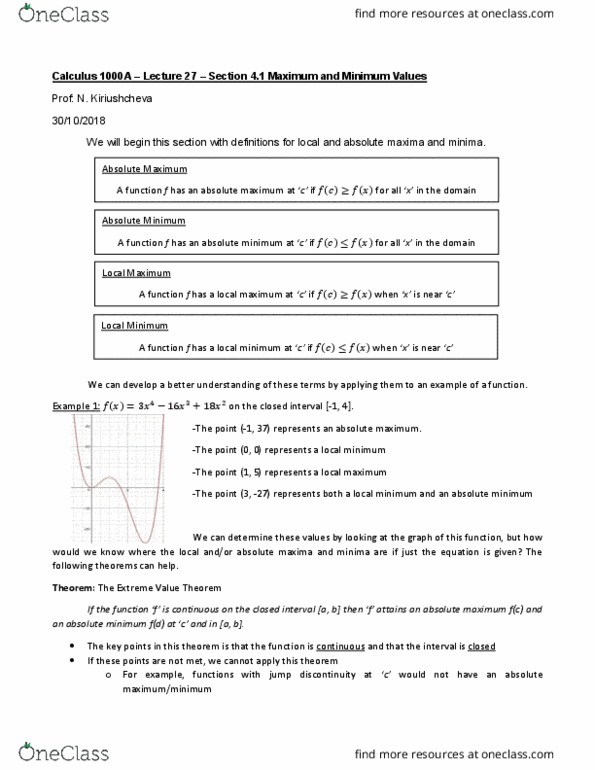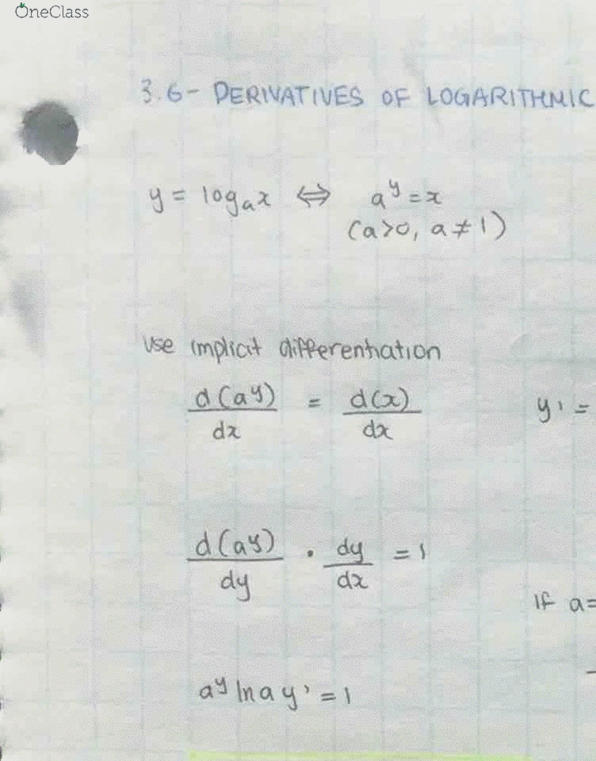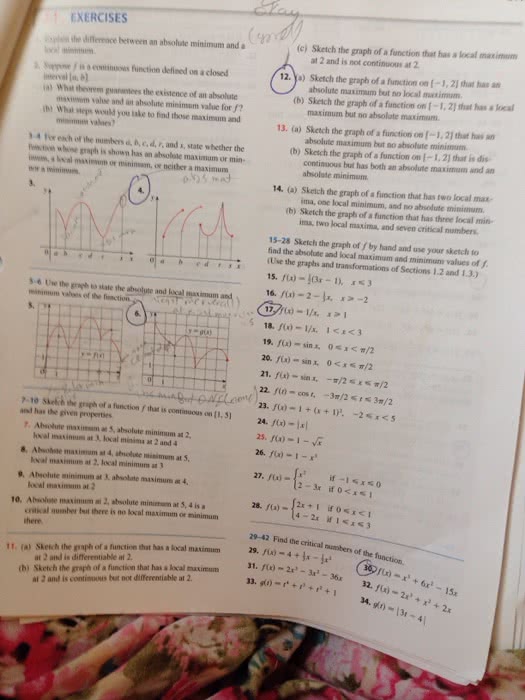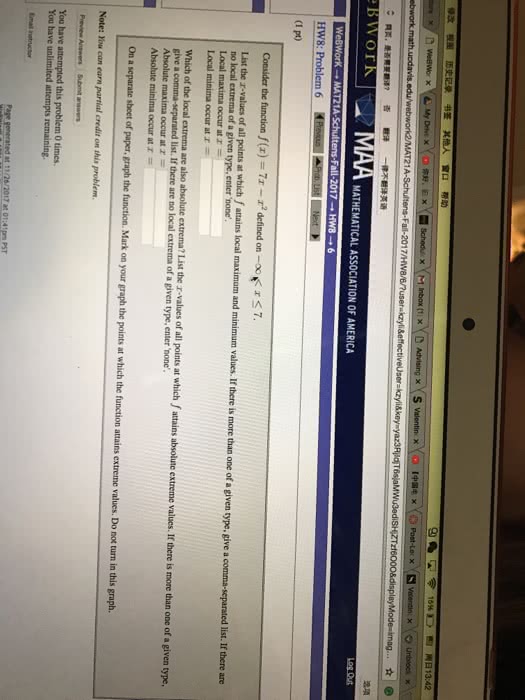Calculus 1000A/B Lecture Notes - Lecture 27: Maxima And Minima, Classification Of Discontinuities
CALC 1000A/B verified notes
27/49View all
Document Summary
A function f has an absolute maximum at (cid:858)(cid:272)(cid:859) if (cid:4666)(cid:4667)(cid:3410)(cid:4666)(cid:1876)(cid:4667) for all (cid:858)x(cid:859) in the domain. A function f has an absolute minimum at (cid:858)(cid:272)(cid:859) if (cid:4666)(cid:4667)(cid:3409)(cid:4666)(cid:1876)(cid:4667) for all (cid:858)x(cid:859) in the domain. A function f has a local maximum at (cid:858)(cid:272)(cid:859) if (cid:4666)(cid:4667)(cid:3410)(cid:4666)(cid:1876)(cid:4667) when (cid:858)x(cid:859) is near (cid:858)(cid:272)(cid:859) A function f has a local minimum at (cid:858)(cid:272)(cid:859) if (cid:4666)(cid:4667)(cid:3409)(cid:4666)(cid:1876)(cid:4667) when (cid:858)x(cid:859) is near (cid:858)(cid:272)(cid:859) Calculus 1000a lecture 27 section 4. 1 maximum and minimum values. We will begin this section with definitions for local and absolute maxima and minima. We can develop a better understanding of these terms by applying them to an example of a function. Example 1: (cid:4666)(cid:1876)(cid:4667)=(cid:885)(cid:1876)(cid:2872) (cid:883)(cid:888)(cid:1876)(cid:2871)+(cid:883)(cid:890)(cid:1876)(cid:2870) on the closed interval [-1, 4]. The point (-1, 37) represents an absolute maximum. The point (0, 0) represents a local minimum. The point (1, 5) represents a local maximum. The point (3, -27) represents both a local minimum and an absolute minimum.
